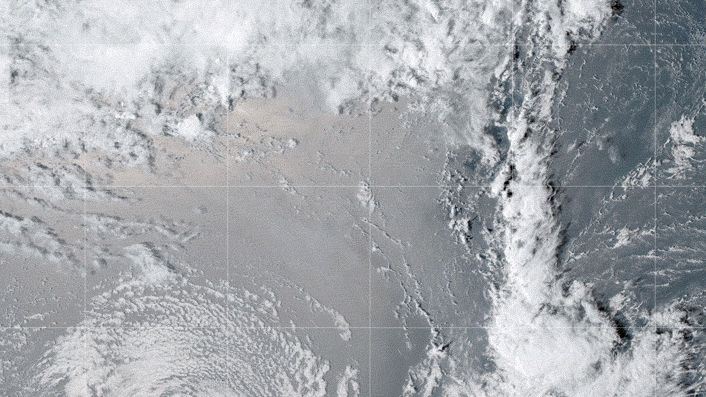
Helens eruption," Matoza told Live Science in an email.
In fact, the atmospheric waves generated small, fast-traveling meteotsunamis — meaning series of waves driven by air-pressure disturbances — which reached the shore hours before the conventional, seismically-driven tsunamis generated by the volcano's blast.
"The height of the 'forerunner' tsunamis … was approximately a few centimeters or so, although it depends on the location," Kubota told Live Science in an email.
Following the record-shattering eruption, Matoza and a team of more than 70 scientists from 17 nations set out to document what atmospheric waves were generated by the blast.The team found that, of all the atmospheric waves produced by the blast, so-called Lamb waves stood out as most prominent.At their tallest, the Lamb waves generated by the Hunga eruption had an amplitude of 280 miles (450 km), meaning they hit the ionosphere — a dense layer of electrically charged particles that lies about 35 to 620 miles (60 to 1,000 km) above the planet's surface.Based on historical data, the 1883 Krakatau eruption generated Lamb waves that circled the Earth the same number of times, the researchers reported.
"We were able to simulate the Hunga Tonga Lamb wave just two days after the event," and now, the new Science study has provided more detail as to how these waves propagated, using various geophysical measurements, Žagar told Live Science in an email.
In their own Science study, Kubota and his colleagues connected the dots between these Lamb waves and the speediest tsunamis observed after the eruption.In addition to huge Lamb waves and fast-moving tsunamis, the Hunga eruption also produced incredibly long-range sound waves and infrasound waves — meaning acoustic waves too low in frequency to be heard by humans, Matoza and his colleagues reportedThe prominent Lamb waves led the pack, followed by the infrasound waves and then the audible sound waves
